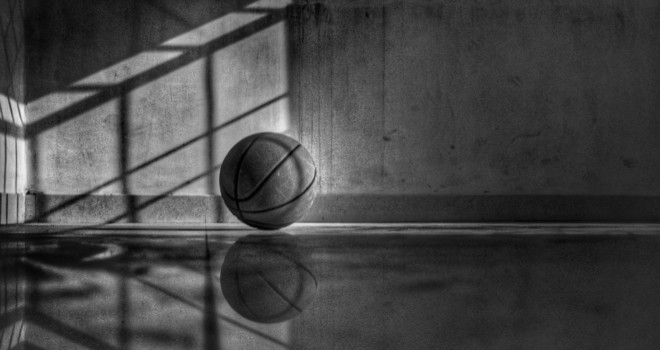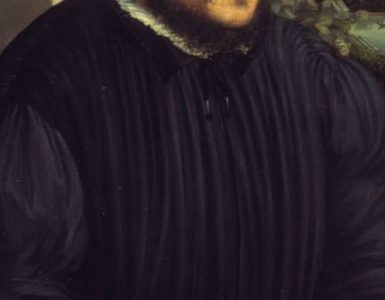The National Basketball Association is in a quandary. The efforts of its players in fighting for social justice, including boycotting games, appears to be futile. Discouragement and a sense of hopelessness have spread through the league. But many have forgotten something of importance, something that offers continuing hope for brotherhood between the races. It is a legacy that was born between two players—Jack Twyman and Maurice Stokes—who proved to the world that friendship between individuals of different colors can provide a basis of hope and a legacy that should never be forgotten.
Jack Twyman & Maurice Stokes
Jack Twyman was born (1934) and raised in Pittsburgh, PA where he graduated from Central Catholic High School. He was cut from his high school basketball team three times. His perseverance, a quality that would last him a lifetime, was a determining asset. He practiced every day, shooting 100 foul shots, 200 jump shots, and 150 set shots. He finally made the team, although as a senior, and earned All-State honors.
Jack graduated from the University of Cincinnati where he averaged 24.6 points and 16.5 rebounds per game in his Bearcat career. The 6’6” forward was drafted by the Rochester/Cincinnati Royals and spent 11 years in his illustrious NBA career. He and Wilt Chamberlain were the first two players to average more than 30 points a game throughout the course of a season. He was elected to the NBA Hall of Fame in 1983.
Maurice Stokes was born on June 17, 1933 in Rankin, PA, just outside of Pittsburgh. He led his high school team to back-to-back city championships. At St. Francis College in Loretto, PA, he became a small-college All-American. In his senior year, he led the Frankies to the NIT where he scored 43 points in an overtime loss to Dayton. Nevertheless he was named MVP of the tournament. He was drafted by the Royals where he was named Rookie of the Year.
In Maurice’s NBA debut he scored 32 points, grabbed 20 rebounds and had 8 assists. He set the NBA record for rebounds in his second season and was selected to three All-Star Games. “If you were starting a team tomorrow and had to start it with one guy,” remarked Royals’ coach Bobby Wanzer, “it has to be Stokes”.
In the final game of the 1958 regular season, against the Minneapolis Lakers, tragedy struck. Stokes hit his head on the floor and sustained an injury that manifested itself several days later, leaving him permanently paralyzed, when he suffered a major seizure on a team flight. He was subsequently taken to the Good Samaritan Hospital in Cincinnati where Jack Twyman became a regular visitor. The final diagnosis of the injury was post-traumatic encephalopathy, a brain injury that severely damaged his motor control center.
“Things Had to Be Done”
Stokes’ family could not afford the medical bills. Teammate Jack Twyman stepped up and took charge, becoming Maurice Stokes’ legal guardian. “Things had to be done immediately,” he said, “and no one was there to do them but me.” Twyman, together with his wife worked feverishly to raise money to pay for Stokes’s medical bills. Jack organized an exhibition doubleheader that raised $10,000 for Stokes’s expenses and filed applications so that his former teammate could receive work injury compensation.
Twyman spent countless hours at the hospital with his friend, who, after regaining consciousness, remained unable to speak. Twyman communicated by going through the alphabet, letter by letter, until Stokes, who was mentally alert, blinked in recognition. Slowly, the process spelled out words. After a painstaking effort, Maurice Stokes was finally able to type a complete sentence: “DEAR JACK: HOW CAN I EVER THANK YOU?” When Twyman read it, he wept. He insisted he did only what anyone else would have done.
“I helped Maury because, frankly, there wasn’t anyone else,” Twyman said. “His family didn’t understand everything and certainly couldn’t afford the bills. I’ve got to be honest — I didn’t think it would last 12 years, but now I wish it would’ve lasted 50 years.” Stokes died from a heart attack on April 6, 1970 at the age of 36. After Twyman’s death in 2012, the NBA created the Twyman-Stokes Teammate of the Year Award. The trophy has two figures, Twyman helping a fallen Stokes get back up.
New York Post columnist Milton Gross had this to say in memory of Maurice Stokes: “Stokes lived as a symbol of the best that a man is, despite the terrible things which can happen to him. He was a beautiful man who believed that surrender was not the way, even though he couldn’t walk, couldn’t talk except agonizingly. And he laughed when he should have cried”.
“He was destined to be one of the greatest players of all time had he not taken ill,” Twyman said of his friend. But who is to know whether what Stokes achieved in a hospital bed and in a wheelchair was, all things considered, more important than what he would have achieved on a basketball court?
Jack Twyman and Maurice Stokes are both enshrined in the Hall of Fame. The story of their friendship, however, should be enshrined in human hearts. While NBA players are fighting for social justice, the Twyman-Stokes legend goes much further than that. Despite differences in color, physical condition, and abilities to communicate, they achieved what no one would have expected: an unbreakable bond that represents a high point in human friendship. It serves as a basis of hope in a climate of hopelessness. It has formed a legacy that should never be forgotten.
✠
Photo by Abhishek Chandra on Unsplash










